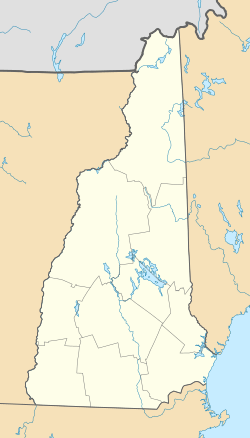2½ Beacon Street facts for kids
Quick facts for kids |
|
|
2+1⁄2 Beacon Street
|
|
| Location | 2+1⁄2 Beacon St., Concord, New Hampshire |
|---|---|
| Area | less than one acre |
| Built | 1860 |
| Architect | Edward Dow |
| NRHP reference No. | 84000500 |
| Added to NRHP | December 17, 1984 |
2+1⁄2 Beacon Street is a very old and important building in Concord, New Hampshire. It was once known as the New Hampshire State Prison Warehouse. This historic building was constructed in 1860 and made bigger in 1868. It is special because it's almost the only part left of New Hampshire's very first state prison. Most of the prison was taken down in the 1890s. This building was added to the National Register of Historic Places in 1984, which means it's recognized as an important historical site.
What Does the Building Look Like?
The building at 2+1⁄2 Beacon Street is on the west side of downtown Concord. It's a two-story building made of brick. It's about 240 feet (73 meters) long. There's also a smaller, one-story part on its west side.
The long front of the building has 15 sections. These sections are separated by brick columns called pilasters. Each section originally had windows or doors. Over time, many changes have been made. Some window openings were changed to doors. Now, some parts even have large garage-style doors on the first floor. The original windows were rectangular with stone sills and tops.
A Look Back at Its History
This building was first built in 1860. A new section was added to its north side in 1868. Its first job was to be a workshop for people who were held at the nearby prison. People worked there on different projects.
The building served this purpose until the entire prison complex closed. The state sold the prison in 1880. In the 1890s, most of the prison was torn down. The Amoskeag Manufacturing Company used the finished stone from the old prison. They used these stones for building projects in Manchester.
However, this building stayed standing. After the prison closed, it was used for many different businesses and industries. Later, it was changed into office spaces. It continues to be an important part of Concord's history.



